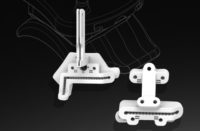The Food and Drug Administration is changing the most common way it approves new low- to moderate-risk medical devices for use in the United States.
Since 1976, manufacturers have been able to pursue an expedited approval process, known as 510(k), if they could prove new products were substantially equivalent to devices, known as predicates, that had previously earned FDA approval.
While the 510(k) clearance pathway has enabled many new products to reach the market sooner, some new devices were being compared to predicates that were very old. Last year, the FDA cleared 3,173 devices through the 510(k) pathway, or 82 percent of all the devices approved by the agency. Nearly 20 percent of those products cleared through the 510(k) pathway were based on predicate devices that were more than 10 years old. That has raised concerns about safety, since, in some cases, the predicate devices may no longer even be on the market.
The FDA wants the 510(k) clearance pathway to shift from using predicate devices over 10 years old and create an alternative pathway that will allow approval based on objective safety and performance criteria.
In a press release issued in November, the FDA said it believed in the merits of the 510(k) process, but that the system must be modernized to “reflect advances in technology, safety and the capabilities of a new generation of medical devices.”
“Rather than looking to the past as a baseline for safety and effectiveness—and rely on predicate devices that are sometimes decades old as our point of comparison—our premarket review would be based on a contemporary baseline that looks to the future and a baseline that can be updated as technologies advance,” the agency states.
Medical device manufacturers are cautiously optimistic about the changes.
“While we believe the 510(k) pathway has proven its effectiveness over the years, we have always maintained that any process can be improved,” says Scott Whitaker, president and CEO of the Advanced Medical Technology Association, a trade organization representing medical device manufacturers. “We stand ready to work with FDA and all stakeholders toward the shared goal of enhancing the current review paradigm. We look forward to learning more about the agency’s plans to implement an alternative 510(k) pathway and to encourage the use of more recent predicates.
“FDA acknowledges that its concern with older predicates only applies to a minority of devices and that those devices have no demonstrated safety concerns. It is our hope that through the regulatory review, the agency will recognize that in some cases, there are legitimate reasons for using older predicates, and that for some devices where the technology has changed little, using those older predicates still makes sense. The proposed 10-year cut off criteria could prove arbitrary, as older predicates can offer extensive data about their performance, which helps [manufacturers] introduce newer, safer devices.”
“We must be vigilant that any changes made to a system that has worked so well for so many patients carefully balances safety and innovation, and does not adversely impact America’s innovators as they seek to improve patient care,” adds Mark Leahey, president and CEO of the Medical Device Manufacturers Association.
On Feb. 1, the FDA released a guidance document for an alternative accelerated approval pathway called the “Safety and Performance Based Process.” The agency is continuing to solicit feedback on how to modernize 510(k) review, including what criteria (other than predicate age) should be considered to help evaluate the safety and effectiveness of devices.





